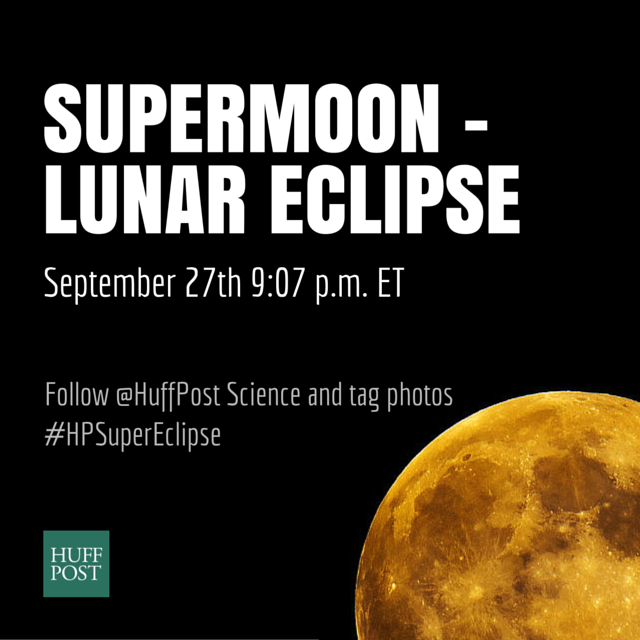Smartphones have made it easy to capture all sorts of fleeting moments -- from a seal riding a whale to the pontiff gliding past in his popemobile.
But if you're hoping to capture an Instagram-perfect shot of this weekend's supermoon lunar eclipse, it will take a bit of preparation. After all, you'll be shooting a darkened moon against the night sky.
Luckily, three accomplished photographers were willing to share their secrets with The Huffington Post. Here's what astrophotographer Rogelio Andreo, Miriam Leuchter, editor-in-chief of Popular Photography and photographer Jason Gerard suggest.
Keep your camera steady and your exposure long.
Whether you're using a smartphone, a point-and-shoot or a DSLR, keeping it steady is essential. As Andreo explains, "Taking photos at night almost always drives up the exposure time, which means you need a stable tripod to mount your camera to in order to keep your pictures from turning out blurry." If you don't have a tripod, try resting your camera on a stool, or just try this hack that uses a piece of string.
Once your lens is steady, long exposure will help capture details of the moon's surface despite the darkness. You'll probably have to download extra photo apps if you're working with a phone, but it's worth it. "An eclipsed moon is much darker than a full moon, so when capturing this eclipse, remember that your exposure time will need to be longer," Andreo says.
Get some magnification.
There are two kinds of zoom. One is desirable for this purpose, and the other is not. With a point-and-shoot camera, zoom until your lens is fully extended toward your subject. But then stop. After the lens is fully extended, your camera switches over to 'digital zoom' -- which makes your photo look pixelated. It "just crops into your picture to make your subject take up more of the frame, but it isn't true telephoto," Leuchter explains.
If you have a smartphone, you likely only have digital zoom capability (unless it's the iPhone 6s), so try to avoid zooming altogether.
To really magnify, try holding your camera lens up to a telescope. Or, as another workaround, Leuchter suggests "putting your smartphone's lens up to the eyepiece of binoculars." There are even phone accessories to make your scoping setup simple and steady.
Pay attention to composition.
Unless you're able to capture all the tiny details on the surface of the moon, you'll need other objects in the shot to make it interesting. Snap while the moon is low on the horizon, and "try to find interesting objects to juxtapose with the full moon, like shooting through trees, or using silhouettes and other objects to show size contrast," says Gerard.
Use a self-timer
Sometimes you set up the perfect shot, but the act of actually pressing the button to snap the picture ruins it. A self-timer allows you to take a hands-off shot -- you can even download an app that does it for you! Gerard explains that "using a self-timing feature helps to prevent vibrations in the camera by allowing it to settle before it takes the picture."
Happy shooting, and don't forget to tag #HPSuperEclipse when you post pictures -- we may feature your best snapshots!

